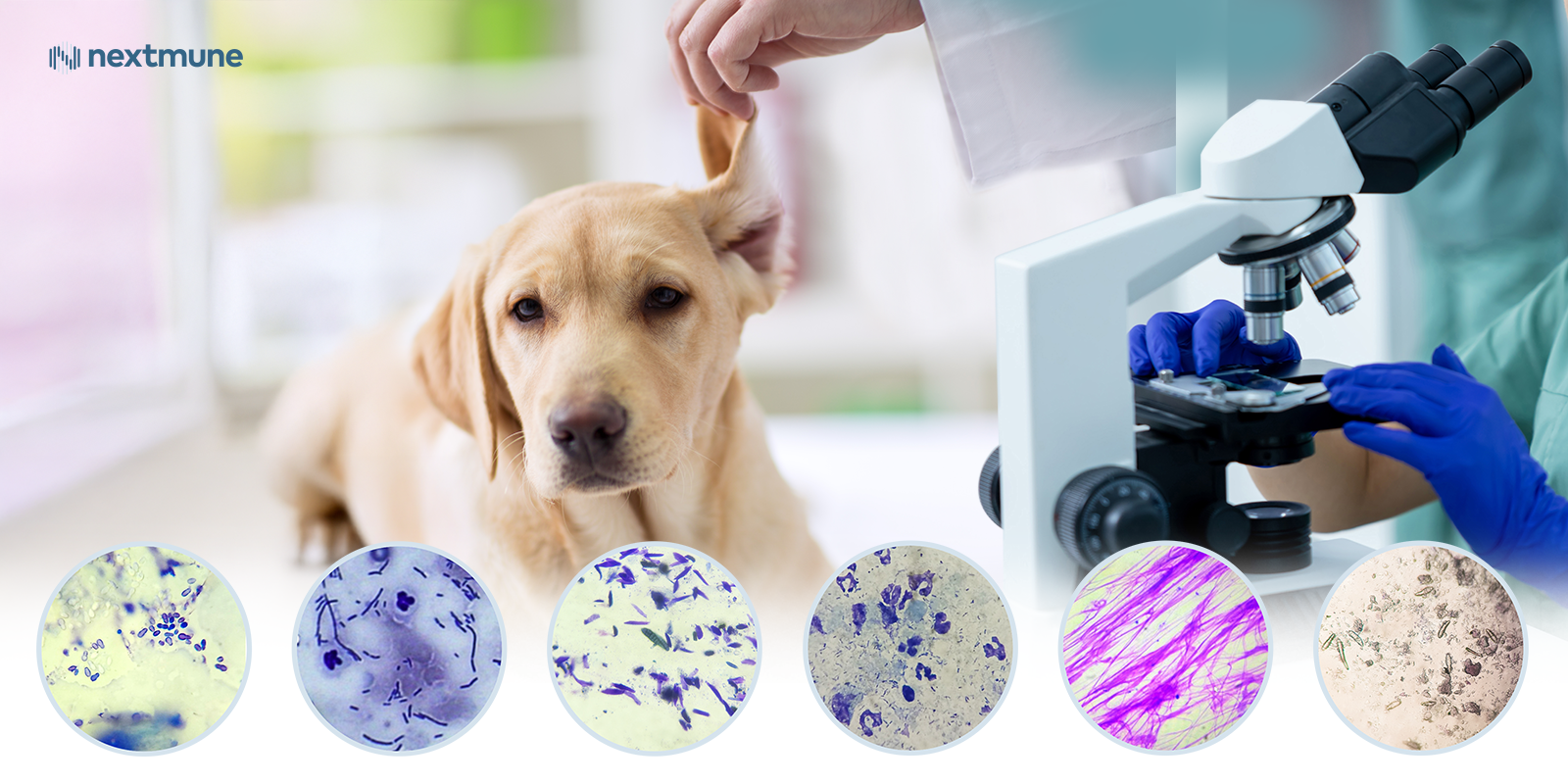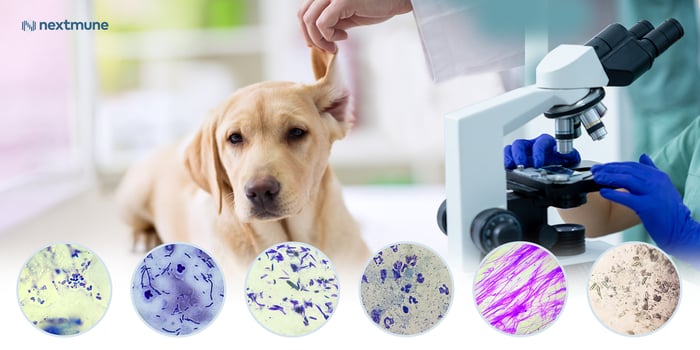The updated ISCAID guidelines emphasise the importance of cytology as a core part of skin health management. They recommend initiating treatment with topical antiseptics or anti-inflammatories, reserving systemic antibiotics for cases where cytology indicates a severe infection. This approach supports:

- Targeted therapy based on cytological findings
- Reduced reliance on systemic antibiotics
- Enhanced antimicrobial stewardship
Read the full ISCAID guidelines here
Why Cytology Still Matters
Cytology offers valuable insight into microbial presence and severity, helping guide more informed decisions.
It enables veterinary teams to:
✔ Identify bacteria, yeast, or mixed populations
✔ Gauge the level of microbial overgrowth
✔ Monitor progress and adapt protocols where needed
Without cytology, decisions may rely more heavily on empirical antibiotic use -increasing the risk of antimicrobial resistance and suboptimal outcomes.
Mild to Moderate Bacterial Overgrowth: When Antiseptics Are Enough
In many cases, cytology reveals bacterial overgrowth without signs of deep infection, making topical antiseptic solutions a suitable first-line choice.
A Proven Combination: Tris-EDTA & Chlorhexidine
- Tris-EDTA acts as a potentiator, disrupting bacterial cell walls and increasing membrane permeability, making bacteria more susceptible to treatment
- Chlorhexidine provides broad-spectrum antimicrobial action and helps manage microbial populations, including Gram-positive and Gram-negative bacteria.


Cytology-Informed Care
By integrating routine cytology and using antiseptic topical therapy when appropriate, practices can support hygiene protocols while helping preserve the efficacy of antibiotics for when they’re truly needed.

.jpg?width=700&name=Asthma%20in%20Cats%20Newsletter_1600x800px_v2%20(1).jpg)

